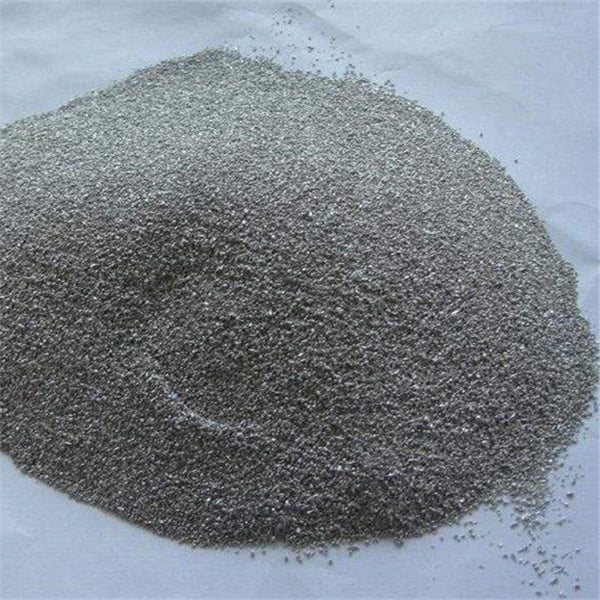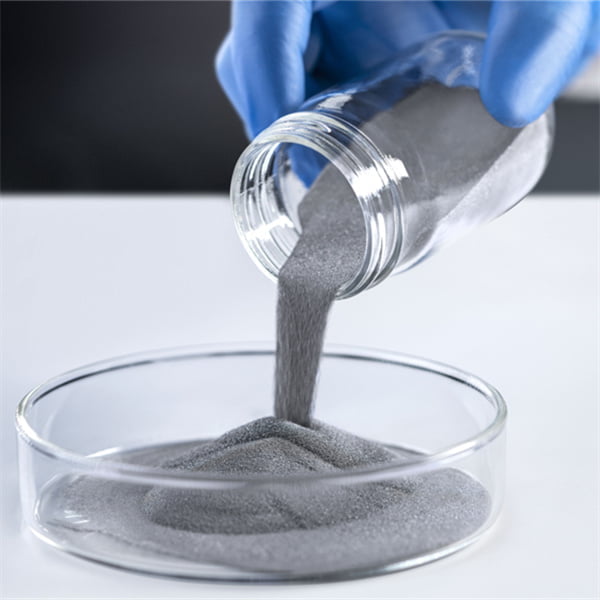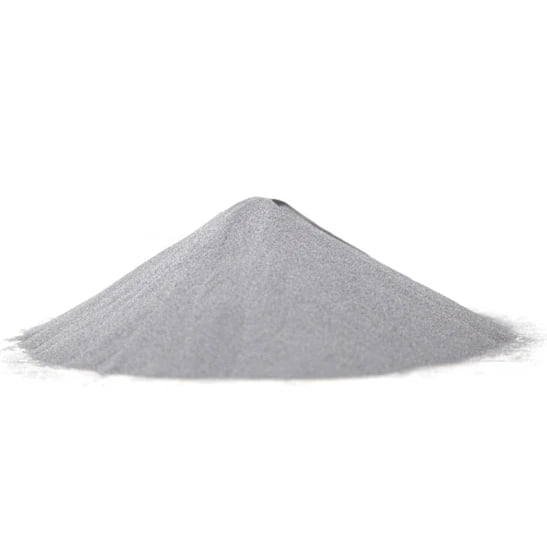Sfäriskt pulver: Översikt, typer, pris
Innehållsförteckning
Översikt
Sfäriskt pulver avser metalliska eller keramiska pulver med en rundad morfologi som framställs genom specialiserade finfördelningsprocesser. Jämfört med oregelbundna pulverpartiklar erbjuder sfäriska pulver fördelar som utmärkt flytbarhet, högre packningstäthet och minskad friktion mellan partiklarna. Detta gör dem idealiska för krävande industriella tillämpningar inom pulvermetallurgi, termisk sprutning, additiv tillverkning av metall och keramisk bearbetning.
Denna omfattande guide omfattar olika typer av sfäriska pulver, deras egenskaper, tillverkningsmetoder, viktiga tillämpningar, specifikationer, leverantörer, hanteringsprocedurer, underhåll av utrustning, urvalskriterier för leverantörer, för- och nackdelar samt svar på vanliga frågor.
Typer av Sfäriskt pulver
De viktigaste typerna av sfäriskt pulver baserat på material och produktionsmetod inkluderar:
Material
- Metallpulver - rostfritt stål, verktygsstål, superlegeringar, titan, aluminium etc.
- Keramiska pulver - aluminiumoxid, zirkoniumoxid, kiseldioxid, karbider, nitrider etc.
- Pulver av kompositer/legeringar - nickelbaserade, koboltbaserade, Fe-baserade etc.
Produktionsmetod
- Gasatomiserade pulver
- Plasmaatomiserade pulver
- Elektrod-induktion-smältgasatomisering (EIGA)
- Process med roterande elektrod (REP)
- Process med roterande elektrod och plasma (PREP)
- Pulver för termisk sprutning
Gasatomisering är den mest använda processen, men metoder som PREP ger överlägsen sfäriskhet och jämn ytmorfologi. Produktionsmetoden styr de slutliga pulveregenskaperna.

Egenskaper och tillämpningar
Egenskaper och typiska användningsområden för de vanligaste sfäriska pulvertyperna:
Rostfritt stål
- Hög hårdhet och korrosionsbeständighet
- Ventiler, pumpar, medicintekniska produkter
Verktygsstål
- Utmärkt slitstyrka
- Skärverktyg, matriser, stansar
Superlegeringar
- Tål höga temperaturer och påfrestningar
- Turbinblad, komponenter för flyg- och rymdindustrin
Titan
- Högt förhållande mellan styrka och vikt
- Fästelement för flyg- och rymdindustrin, biomedicinska implantat
Aluminium
- Låg vikt, utmärkt värmeledningsförmåga
- Bildelar, kylflänsar
Keramik
- Hög hårdhet, slitstyrka och korrosionsbeständighet
- Lager, tätningar, pansarbeläggningar
Sfärisk morfologi förbättrar pulverpackningens densitet och flöde utöver basmaterialets inneboende egenskaper.
Tillverkningsmetoder
Vanliga metoder för att producera sfäriska pulver:
Atomisering av gas
- Metallegering smälts och finfördelas med inert gasstråle
- Lägre investeringskostnad
- 10 - 150 μm storleksintervall
Plasmaatomisering
- Användning av plasmaenergi för att smälta och atomisera
- Finare pulver ner till 5 μm
- Högre renhet, mer sfärisk
EIGA
- Elektroderna smälts induktivt i atomiseringskammaren
- Snabb stelning av fina droppar
- Kontroll över storlek, morfologi
PREP
- Roterande elektrod som smälts av plasmabrännare
- Centrifugal sönderdelning till fint pulver
- Mjuk sfärisk form
Termisk spray
- Råmaterialets trådar/stavar finfördelas med het gas
- Oxiddispersionsförstärkta legeringar
- Grovare ytor än andra metoder
Specifikationer
Typiska specifikationer för sfäriskt pulver är bl.a:
| Parameter | Specifikation |
|---|---|
| Partikelstorlek | 10 - 150 μm |
| Partikelns form | Sfärisk |
| Flödeshastighet | 25 - 35 s/50g |
| Skenbar densitet | 40 – 60% |
| Tappdensitet | Upp till 90% teoretiskt |
| Oxid på ytan | < 1% efter vikt |
| Resterande gaser | Minimerad |
Det är viktigt att uppfylla kraven på storleksfördelning, hög sfäricitet, slät yta och sammansättning. Mindre storlekar förbättrar densifieringen medan större storlekar minskar kostnaderna.
Överväganden om design
Viktiga designfaktorer för komponenter som använder sfäriskt pulver:
- Dimensionella toleranser - Redovisning av sintringskrympning
- Krav på ytfinish - Minimal efterbearbetning
- Mekaniska egenskaper - Anpassa material och process till de egenskaper som krävs
- Produktionskostnader - Optimera detaljdesignen för att balansera prestanda och kostnad
- Sekundära operationer - Undvik stora bearbetningsdifferenser
- Krav på montering - Utformning av sammanfogningsytor, sammankopplingsfunktioner
- Överensstämmelse med standarder - För flyg- och rymdindustrin, biomedicinska tillämpningar etc.
Den designfrihet som möjliggörs av avancerade tillverkningsprocesser som additiv tillverkning ger möjlighet till mer optimerade konstruktioner som inte är möjliga med smidd metall.

Konsolideringsprocesser
Vanliga konsolideringsprocesser för pulver som lämpar sig för sfäriska pulver:
- Additiv tillverkning - Selektiv lasersmältning, elektronstrålesmältning etc. ger maximal flexibilitet
- Formsprutning av metall - Högvolymsproduktion av små, komplexa delar
- Kall/varm isostatisk pressning - Producerar delar med nettoform eller nära nettoform
- Pressa och sintra - Konventionell pulvermetallurgisk process som kombinerar formning och sintring
- Termisk spray - Deponerar smält pulver på ett förberett substrat
- Slurrybaserade metoder - Slipgjutning, bandgjutning, elektroforetisk deponering etc. för keramik
Den sfäriska formen förbättrar pulverpackningen och flödet under bearbetning, vilket möjliggör hög densitet och enhetliga mikrostrukturer.
Leverantörer och prissättning
Ledande globala leverantörer av sfäriska pulver är bl.a:
| Leverantör | Material | Prisintervall |
|---|---|---|
| Sandvik | Legerade stål, rostfria stål | $50-200/kg |
| Snickare Tillsats | Verktygsstål, superlegeringar | $70-250/kg |
| Höganäs | Rostfria stål | $45-180/kg |
| Praxair | Titan, superlegeringar | $100-350/kg |
| LPW-teknik | Aluminiumlegeringar, kompositer | $60-220/kg |
Priserna beror på legeringssammansättning, kvalitet, partistorlek och inköpskvantitet. Små FoU-kvantiteter är dyrare än volymer för bulkproduktion.
Hantering och förvaring
Riktlinjer för säker hantering och förvaring av Sfäriska pulver:
- Förvara förslutna behållare i en sval, torr och inert atmosfär för att förhindra oxidation och kontaminering
- Begränsa exponeringen för fukt för att undvika agglomerering av pulver
- Använd behållare av stål eller plast istället för aluminium för att förhindra reaktion
- Se till att behållarna är ordentligt jordade för att undvika ackumulering av statisk laddning
-Hantera behållare och pulver varsamt för att förhindra att partiklarna skadas under transport och omlastning
- Undvik gnistor, flammor och antändningskällor i närheten av lagrings- och hanteringsutrymmen
- Installera lämplig ventilations- och dammuppsamlingsutrustning
- Använd lämplig personlig skyddsutrustning för hantering av fina pulver - handskar, andningsskydd, ögonskydd
Korrekta rutiner förhindrar förändringar i pulveregenskaperna som kan ha en negativ inverkan på konsolideringen och de slutliga detaljegenskaperna.
Underhåll av utrustning
Underhållstips för viktiga pulverhanteringssystem:
Siktar:
- Byt ut skadade nätskärmar för att undvika revor och öppningar
- Rengör siktarna regelbundet för att förhindra igensättning, vilket kan leda till att partiklarna skadas
- Kontrollera vibrationsamplitud och tidsinställningar för att förhindra arbetshärdning
Hoppare och matare:
- Inspektera utloppsportarna för ansamlingar och ta bort allt material som blockerar flödet
- Kontrollera att matarinställningarna matchar pulveregenskaperna för att säkerställa ett tillförlitligt flöde
- Kontrollera behållarens foder för slitage och byt ut om de är skadade
Blandningskärl:
- Byt ut slitna bafflar och förstärkare för homogen blandning utan segregering
- Inspektera bladets skick och reparera/byt ut skadade delar
- Kontrollera packningar och tätningar för att förhindra läckage av pulver under drift
Verktyg:
- Övervaka måttnoggrannheten och reparera/byt ut vid behov
- Applicera smörjmedel på pressar och verktyg enligt schema för att säkerställa enkel frigöring
- Verifiera värmeelement och temperaturreglage på ugnar
Välja Sfäriskt pulver Leverantörer
Viktiga faktorer vid val av leverantörer:
- Teknisk expertis inom material, tillverkningsprocesser, detaljkonstruktion etc. för att stödja kunderna
- Utbud av pulveralternativ inklusive olika material, storlekar, morfologier och beläggningar
- Strikt kvalitetssäkring som omfattar kemisk analys, mikroskopisk inspektion, processkontroll etc.
- Produktionskapacitet att möta krav i rätt tid
- Tjänster som erbjuds som provtagning, prototyptillverkning, testning, analys etc.
- Anseende inom branschen för att konsekvent leverera pulver av hög kvalitet
- Certifieringar såsom ISO 9001, AS9100, ISO 13485 etc.
- Konkurrenskraftig prissättning kombinerat med mervärdestjänster och kundsupport
- Frakt- och logistikkapacitet för snabb leverans med minimala ledtider
Rätt partner tillhandahåller både sfäriska pulver som är skräddarsydda efter behov och teknisk expertis för framgång.
Fördelar kontra begränsningar
Fördelar
- Utmärkt pulverflöde och packningstäthet
- Förbättrad sintrad densitet och mikrostruktur
- Minskade inre spänningar under komprimering
- Gör det möjligt att tillverka komplexa geometrier
- Konsekventa metallurgiska egenskaper
- Bra ytfinish på sintrade delar
Begränsningar
- Dyrare än oregelbundet pulver
- Kräver avancerad tillverkningsteknik
- Begränsade storlekar tillgängliga för mycket fina pulver
- Det kan vara svårt att kontrollera partikelstorleksfördelningen
- Vissa material är svåra att finfördela till sfäriskt pulver

Vanliga frågor
Vilka är de största fördelarna med att använda sfäriskt pulver?
De främsta fördelarna är utmärkt flytbarhet för enkel hantering, hög packningstäthet för förbättrad komprimering, lägre interpartikelfriktion som möjliggör komplexa geometrier och konsekventa metallurgiska egenskaper.
Vilka material är vanligt förekommande som sfäriskt pulver?
Vanliga material är rostfritt stål, verktygsstål, superlegeringar, titanlegeringar, aluminiumlegeringar, nickelbaserade legeringar och keramiska pulver.
Vilka branscher använder vanligtvis sfäriskt pulver?
Viktiga branscher är flyg-, medicin-, fordons-, försvars-, energi-, elektronik- och industriutrustningstillverkning.
Vad är det typiska storleksintervallet för sfäriska pulver?
Konventionella gasatomiserade sfäriska pulver varierar från cirka 10-150 mikrometer. Specialiserade tekniker kan producera sfäriska pulver i submikron- till nanoskala.
Hur mycket dyrare är sfäriskt pulver jämfört med oregelbundet pulver?
Priset för sfärisk form är vanligtvis 20-50% jämfört med oregelbundna pulver. Fördelarna motiverar dock ofta den högre kostnaden för kritiska applikationer.
Slutsats
Med sin karakteristiska rundade form och släta yta, Sfäriska pulver ger högre densitet och överlägset flöde jämfört med oregelbundna pulver. De konsekventa partikelegenskaperna ger utmärkt kompressibilitet, kompakterbarhet och sintringsbarhet i en rad olika metaller och keramer. Fortsatt utveckling av finfördelningsprocesser gör sfäriska pulver tillgängliga i ett bredare urval av material och storlekar än någonsin tidigare. Genom att optimera detaljdesign och process för att dra full nytta av fördelarna med att börja med sfäriskt pulver kan man på ett kostnadseffektivt sätt få fram högpresterande detaljer.
Dela på
MET3DP Technology Co, LTD är en ledande leverantör av lösningar för additiv tillverkning med huvudkontor i Qingdao, Kina. Vårt företag är specialiserat på 3D-utskriftsutrustning och högpresterande metallpulver för industriella tillämpningar.
Förfrågan för att få bästa pris och anpassad lösning för ditt företag!
Relaterade artiklar

Högpresterande segment för munstycksvingar: Revolutionerande turbineffektivitet med 3D-utskrift i metall
Läs mer "Om Met3DP
Senaste uppdateringen
Vår produkt
KONTAKTA OSS
Har du några frågor? Skicka oss meddelande nu! Vi kommer att betjäna din begäran med ett helt team efter att ha fått ditt meddelande.

Metallpulver för 3D-printing och additiv tillverkning
FÖRETAG
PRODUKT
cONTACT INFO
- Qingdao City, Shandong, Kina
- [email protected]
- [email protected]
- +86 19116340731








